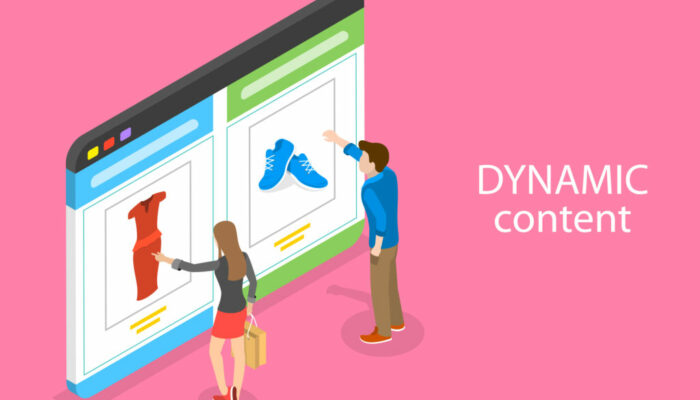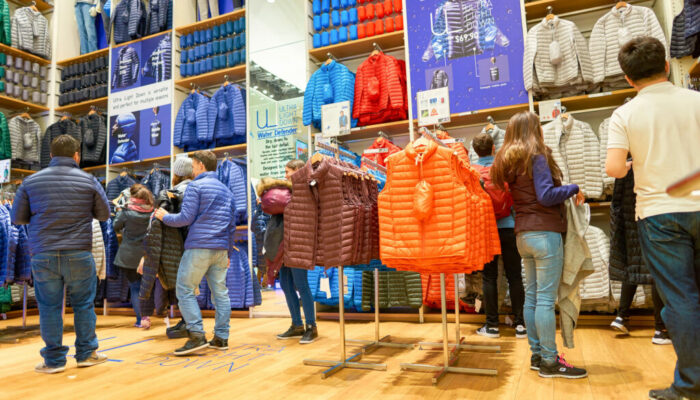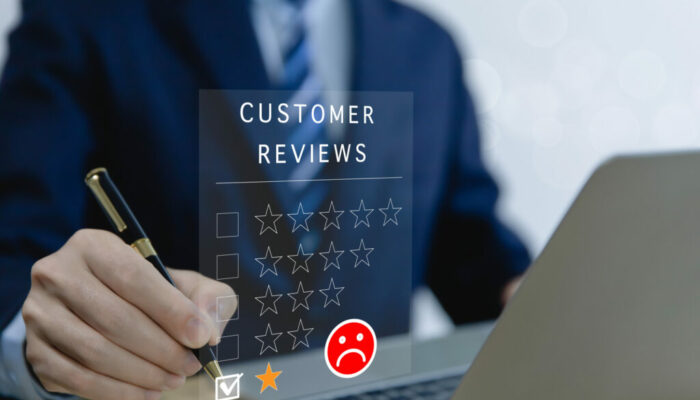Understanding the Essence of Personalization in Retail

Personalization in retail goes beyond addressing customers by their first name in emails. It involves understanding individual preferences, predicting needs, and tailoring every aspect of the shopping journey to create a unique and satisfying experience.
Dynamic Website Content
Implementing a dynamic website that adapts its content based on customer behavior. For instance, an online fashion retailer can showcase different collections based on the customer’s browsing history, ensuring a personalized and relevant display.
Personalized Recommendations
Utilizing AI-driven recommendation engines to suggest products based on past purchases, browsing history, and preferences. An electronics retailer, for example, can recommend complementary accessories or the latest gadgets based on a customer’s previous purchases.
Predictive Customer Engagement
Going beyond reactive personalization, predictive customer engagement involves anticipating customer needs before they express them. Retailers can leverage predictive analytics to foresee upcoming trends, forecast customer preferences, and proactively tailor their offerings. By understanding the evolving needs of customers, retailers can position themselves as anticipatory partners in their shopping journey.
Seasonal Predictive Offers
A retail clothing brand can use predictive analytics to anticipate seasonal shifts in customer preferences. For instance, as summer approaches, the brand can proactively offer personalized recommendations for summer apparel, aligning with individual tastes and preferences.
Emotional Connection Through Personalization
Beyond transactional interactions, personalization can create emotional connections between customers and brands. Understanding the emotional triggers of individual customers allows retailers to tailor experiences that resonate on a personal and emotional level. This connection fosters brand loyalty and a deeper engagement with the overall shopping journey.
Celebratory Personalization
Recognizing and celebrating significant milestones in a customer’s journey, such as anniversaries or birthdays. A luxury goods retailer can send personalized messages or exclusive offers during these occasions, creating a sense of celebration and emotional connection.
In summary, understanding the essence of personalization in retail involves going beyond basic customization. Predictive customer engagement and fostering emotional connections through personalization are integral components that elevate the concept of personalization from mere customization to a dynamic and emotionally resonant strategy.
The Power of Data-driven Customer Insights For a Unique Customer Experience

Unlocking the full potential of personalization requires harnessing data-driven customer insights. By analyzing customer data, retailers can gain a deep understanding of individual preferences, behaviors, and purchase patterns.
Purchase History Analysis
Analyzing past purchases to identify patterns and trends. A beauty retailer might notice that a customer regularly buys skincare products in the winter, allowing them to proactively recommend winter skincare essentials during that season.
Behavioral Analysis
Studying online behavior, such as the pages visited, time spent on specific products, and interactions with promotional content. A home goods retailer can use this data to personalize website banners or email campaigns, showcasing products aligned with the customer’s interests.
Proactive Anticipation of Customer Needs
Data-driven customer insights enable retailers to move beyond understanding historical behavior to proactively anticipating future needs. By analyzing past interactions, purchase history, and preferences, retailers can employ predictive modeling to forecast upcoming needs. This proactive approach ensures that personalized recommendations and offerings are not just reactive but forward-thinking, aligning with customers’ evolving expectations.
Seasonal Predictive Merchandising
Leveraging historical data to predict seasonal trends and adjusting product assortments accordingly. For instance, a home goods retailer can use data insights to anticipate an increase in demand for outdoor furniture as the summer approaches, ensuring timely and relevant product recommendations.
Individualized Customer Journey Mapping
Mapping the customer journey on an individual level involves creating a dynamic and personalized roadmap based on data insights. This goes beyond generalized customer journey maps and tailors the entire shopping experience to the unique preferences and behaviors of each customer. By understanding how individual customers navigate through various touchpoints, retailers can optimize the journey for maximum engagement.
Tailored Online-to-Offline Transitions
Recognizing when a customer transitions from online browsing to in-store exploration. A consumer electronics retailer can use data to identify when a customer researches products online and then provide personalized in-store experiences, such as showcasing similar products or offering exclusive in-store promotions.
In conclusion, the power of data-driven customer insights extends beyond basic analytics. Proactively anticipating customer needs and individualizing customer journey mapping are essential layers that enrich the personalization strategy. By delving into these aspects, retailers can unlock a deeper level of understanding, ensuring that personalization efforts are not only responsive but also predictive and tailored to the individual nuances of each customer.
Tailoring Marketing Strategies for Personalized Engagement

Crafting personalized marketing strategies is essential for engaging customers on a deeper level. From targeted email campaigns to personalized promotions, retailers can use personalization to create a more meaningful connection with their audience.
Segmented Email Campaigns
Implementing segmented email campaigns based on customer demographics, preferences, or purchase history. A sports retailer might send specialized emails featuring running gear to customers who have previously purchased running shoes.
Exclusive Personalized Promotions
Offering exclusive promotions tailored to individual customers. For instance, a furniture retailer can provide a special discount on home decor items to customers who have recently purchased furniture.
Behavioral Trigger Campaigns
Behavioral trigger campaigns are designed to respond dynamically to customer actions and behaviors in real-time. By setting up automated campaigns triggered by specific customer actions, retailers can deliver timely and relevant messages. This approach ensures that marketing communications align with the customer’s current interests and activities, enhancing engagement.
Abandoned Cart Recovery
Implementing automated emails triggered when a customer abandons their online shopping cart. An e-commerce retailer can send a personalized email with a reminder of the items left in the cart and perhaps offer an exclusive discount to encourage the completion of the purchase.
Journey-Based Personalization
Journey-based personalization involves tailoring marketing messages based on where a customer is in their buying journey. By understanding the customer’s current stage, retailers can deliver content that guides and supports their decision-making process. This strategic approach ensures that marketing efforts are not only personalized but also contextually relevant.
Onboarding Personalization
Customizing onboarding campaigns for new customers. For instance, a subscription service can send personalized onboarding emails that introduce new users to key features, offer tips for optimal usage, and provide exclusive welcome offers based on individual preferences collected during sign-up.
In summary, tailoring marketing strategies for personalized engagement requires a nuanced approach. Behavioral trigger campaigns respond dynamically to customer actions, while journey-based personalization ensures that marketing messages align with the customer’s current stage in the buying journey. By incorporating these advanced tactics, retailers can create marketing experiences that are not only personalized but also responsive and contextually aware.
Enhancing In-Store Experiences through Personalization

Personalization is not confined to online interactions. Retailers can enhance in-store experiences by leveraging technology to tailor the shopping environment to individual preferences.
Beacon Technology
Implementing beacon technology to send personalized offers or recommendations to customers’ smartphones as they navigate the store. For example, a grocery store can use beacons to alert customers about personalized discounts on frequently purchased items.
Contextual Notifications with Beacon Technology
Utilizing beacon technology to send contextual notifications to customers’ smartphones as they navigate the store. Beacons, small Bluetooth devices, enable retailers to push personalized offers, promotions, or product recommendations based on the customer’s location within the store. This enhances the in-store experience by providing timely and relevant information.
Exclusive Discounts
Sending a personalized notification offering an exclusive discount on a product category when the customer is in proximity to that section of the store. For example, a department store can use beacons to notify customers about a limited-time discount on kitchen appliances when they are in the home goods section.
In-Store Personal Shopping Apps
Developing personal shopping apps that allow customers to create profiles, receive personalized recommendations, and navigate the store efficiently. These apps enhance the in-store experience by providing a tailored shopping journey, guiding customers to products of interest and offering real-time assistance.
Product Locator Feature
Integrating a product locator feature within the app that helps customers find specific items in the store. A grocery store, for instance, can allow customers to input their shopping list into the app, which then provides a personalized map of the store, guiding them to the exact aisle and shelf for each item.
In conclusion, enhancing in-store experiences through personalization involves leveraging advanced technologies to create a tailored and contextually aware environment. Contextual notifications with beacon technology deliver personalized information based on the customer’s location, while in-store personal shopping apps provide a comprehensive and individualized shopping journey. By implementing these strategies, retailers can bridge the gap between the physical and digital realms, offering a personalized and memorable in-store experience for customers.
The Role of Customer Feedback in Refining Personalization

Creating a truly personalized retail experience involves a continuous feedback loop. Encouraging and analyzing customer feedback helps retailers understand the effectiveness of personalization efforts and identify areas for improvement.
Post-Purchase Surveys
Implementing post-purchase surveys to gather feedback on the shopping experience. An electronics retailer can use surveys to inquire about customer satisfaction with product recommendations and the overall personalization of the shopping journey.
Adapting Based on Feedback
Actively adapting personalization strategies based on customer feedback. If feedback indicates that a clothing retailer’s sizing recommendations are not accurate, adjustments can be made to enhance the accuracy of future recommendations.
Real-time Feedback Mechanisms
Implementing real-time feedback mechanisms to capture customer sentiments immediately after a personalized interaction. This approach enables retailers to gather insights when the customer experience is still fresh in their minds, allowing for more accurate and timely feedback.
Post-Purchase Surveys
Deploying post-purchase surveys that focus on the personalized aspects of the shopping experience. An online retailer can send a brief survey after a purchase, asking customers to rate the relevance of product recommendations and the overall satisfaction with the personalized shopping journey.
Iterative Personalization Based on Feedback
Actively using customer feedback to iterate and improve personalization strategies. By analyzing feedback trends, retailers can identify areas of strength and areas that need refinement. This iterative approach ensures that personalization efforts align more closely with customer expectations over time.
Adapting Recommendation Algorithms
If feedback indicates that customers find product recommendations too broad, retailers can refine recommendation algorithms to consider more nuanced factors such as specific product features, customer reviews, or current trends.
In summary, the role of customer feedback in refining personalization is integral to the evolution of a successful strategy. Real-time feedback mechanisms capture immediate insights, while an iterative approach based on feedback allows retailers to continually enhance and tailor personalization efforts. By actively engaging with customer feedback, retailers demonstrate a commitment to improvement and responsiveness, fostering a stronger connection with their audience.
Navigating Privacy Concerns and Building Trust

communicating how customer data is used and ensuring robust security measures are crucial for maintaining a positive and trusting relationship.
Transparent Privacy Policies
Clearly communicating privacy policies on websites and in-store to assure customers of the responsible use of their data. An online marketplace can prominently display its privacy policy, outlining how customer data is collected, stored, and utilized.
Opt-In Personalization
Implementing opt-in mechanisms that allow customers to choose the level of personalization they are comfortable with. For instance, a lifestyle retailer can offer customers the option to opt into personalized promotions and recommendations during the registration process.
Transparent Communication Channels
Establishing transparent communication channels to educate customers about how their data is collected, used, and protected. Clear and accessible privacy policies, both online and in-store, contribute to building trust by providing customers with a comprehensive understanding of the retailer’s data practices.
Privacy FAQ Section
Creating a dedicated section on the website or app that addresses frequently asked questions about privacy. This section can cover topics such as data storage, usage, and the types of personalized experiences customers can expect.
Customizable Personalization Settings
Implementing customizable personalization settings that empower customers to control the level of personalization they receive. By giving customers the ability to opt in or out of specific personalized features, retailers respect individual preferences and foster a sense of control over their data.
Preference Center
Developing a preference center where customers can easily manage their personalization settings. An online fashion retailer, for instance, can allow customers to specify their preferences for personalized product recommendations, email communications, and other tailored experiences.
In conclusion, successfully navigating privacy concerns and building trust is foundational to the ethical implementation of personalized strategies. Transparent communication channels and customizable personalization settings empower customers with knowledge and control over their data, fostering a relationship built on trust and mutual understanding. By incorporating these considerations, retailers can demonstrate their commitment to privacy, thereby strengthening the foundation of trust with their valued customers.
Conclusion: Elevating Retail Experiences through Personalization

Retail personalization is more than a trend; it’s a transformative strategy that enhances customer experiences. By grasping the core of personalization, using data-driven insights, customizing marketing, improving in-store experiences, actively seeking feedback, and addressing privacy concerns transparently, retailers can build lasting connections. Posibolt believes that the future of retail centers on cultivating meaningful, personalized relationships with each customer.
The journey towards exceptional personalized retail experiences is both exciting and challenging. To further enhance your understanding of this transformative approach, we encourage you to visit Retail Innovations Today, a leading resource for the latest trends and insights in retail personalization.

